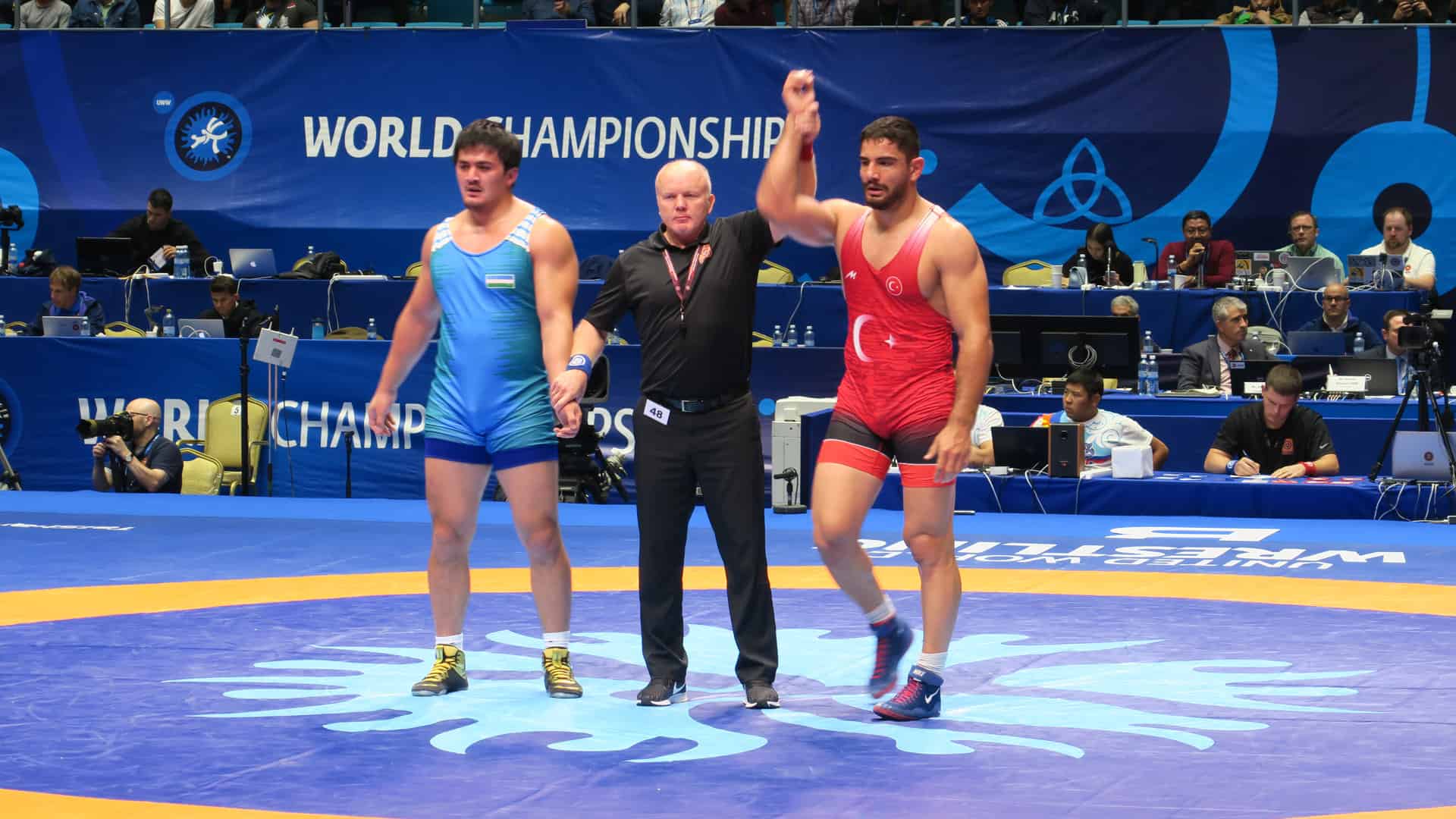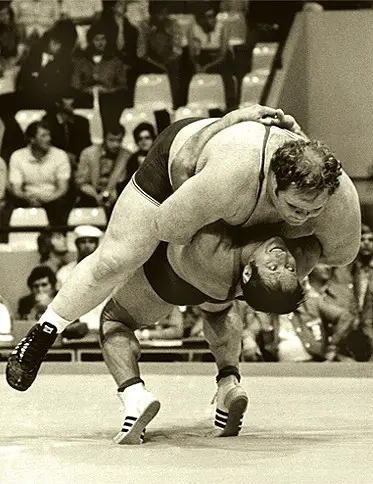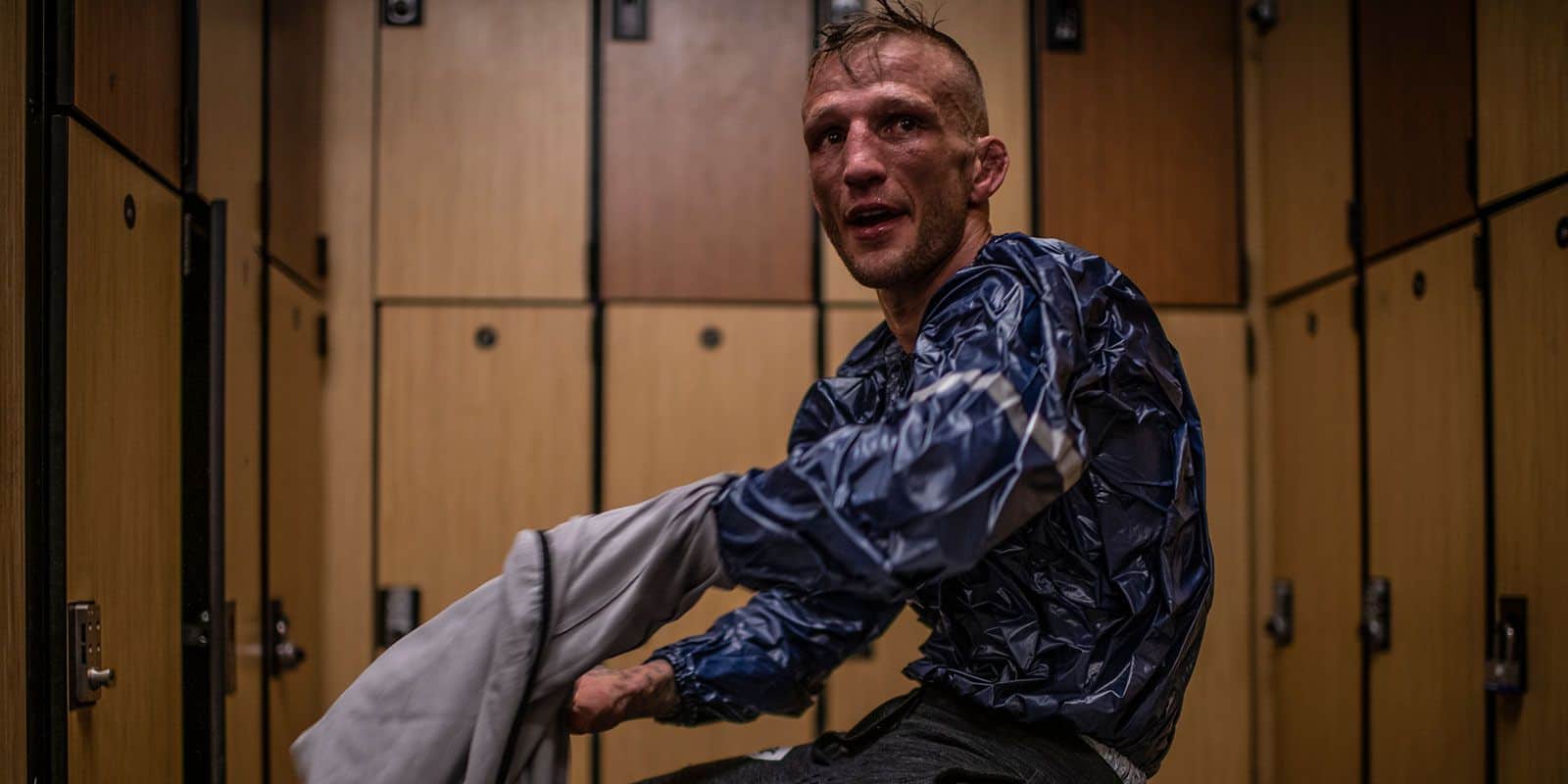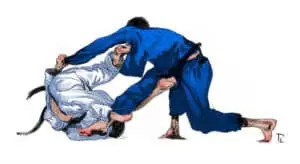Wrestling is a tough sport that places significant stress on an athletes neck, back, arms and legs. It is an intensive anaerobic workout that pushes athletes to the edge of their physical capability. Injuries are common, with wrestlers often injuring their knees, shoulders and necks while also suffering cuts.
Wrestlers often put themselves through grueling workouts and rigorous diets to get in shape and qualify for their weight class. It is natural to wonder due to the stress wrestlers put their body through particularly when young athletes are going through puberty if they are stunting their growth. We will explore if wrestling can stunt growth?

Can wrestling stunt growth? No, wrestling can not stunt growth. Studies have determined that wrestling has no impact on a child’s growth. Poor nutrition and poor weight cutting can stunt a child’s growth however these are unrelated to wrestling. If a young wrestler eats a nutritious diet, cuts a small weight correctly then wrestling will not stunt their growth.
Research Studies – Exploring The Relationship Between Wrestling And Growth
In 1984 Clarke et al. studied height, weight, strength and aerobic capacity changes in 7-9 year old boys (N=23) after they completed 3 months of intensive wrestling training and competition. The data was compared to a group of twenty two 7- to 9-year-old non wrestling boys of similar age, height, and weight during he same time period. The boys body fat was were measured using skinfolds. Back lift, leg press, dips and chin ups were used to test strength. The boys V02 max and and HR max were measured to test aerobic capacity. Aerobic capacity did not improve significantly greater than the control group. Arm and leg strength did improve improve significantly. No significant change occurred in height or weight. The results suggest that wrestling does increase a boy’s strength but not does not affect height or weight.
In 1993 Housh et al. studied 477 high school wrestlers for the purpose of studying the effect of wrestling on anthropometric growth patterns. The study measured 13 anthropometric dimensions on each subject wrestlers. The anthropometric data was compared to a nationally representative sample of adolescent males. The results indicated that there were no statistically significant differences between the wrestlers and the national sample in terms of yearly changes in physical characteristics. Housh et al.’s (1993) findings highlight that wrestling does not effect growth patterns.

In 1995 Roemmich studied the effects of wrestling on the growth, maturation and hormonal balance of 9 adolescent (15 years old) wrestlers and 7 control subjects (15 years old). Data was measured before the wrestling season (pre-season), late-season, and 4 months post-season. Roemmich (1995) found that wrestling during the season negatively effected growth hormones, protein nutrition, soft tissue accretion, and strength, but had not impact on skeletal growth and maturation. However these negative effects on growth hormones were reversed post season. Suggesting that excessive weight cutting and wrestling competition can negatively effect hormones but through reducing weight cutting and the intensity of wrestling training these effects can be mitigated.
In 2018 Piskin et al. studied 50 adolescent male wrestlers from 5 different wrestling academies all of which had competition experience and 21 sedentary healthy male controls aged between 13-15 years from Turkey. The subjects’ age, height, weight, height, and Body Mass Index were studied. Furthermore, the subjects’ testosterone, dehydroepiandrosterone sulphate, follicle stimulating hormone, luteinizing hormone, prolactin, cortisol, insulin like growth factor-1 (IGF-1), thyroid stimulating hormone (TSH) and free thyroxin were measured. Piskin et al. (2018) found that physical characteristics and puberty levels according were similar in both the wrestlers and the control group. There were no significant differences between wrestlers and the sedentary control group in terms of testosterone, cortisol, IGF-1 and prolactin levels. Demonstrating that wrestling does not influence an athlete’s height and growth.

What Does Cause Stunted Growth?
3 major factors which can cause stunted growth in healthy children are excessive weight cutting, poor nutrition and excessive exercise. Lets look into these 3 factors more closely.
Weight Cutting

Does weight cutting stunt growth? Yes, weight cutting can stunt growth. excessive weight cutting that is performed by by starving yourself and completely dehydrating your body will suppress your IGF-1 levels, prevent your body from getting calories minerals and vitamins it needs to grow and will slow down your metabolism making it harder to grow to your potential adult height.
If you are a high school wrestler you should not cut weight at all. If you have a bit of extra fat slowly increase your activity output and slowly decrease calories to increase your lean body mass. If you feel fatigued and lose strength then you decreased your calories by too much and you need to eat more. You should start off by just removing the nutrient devoid food from your diet and then if you have to slowly decrease calories until you start to see your abs.
You will feel stronger and fitter if you do not cut weight and will make wrestling much more enjoyable. By not cutting you will prolong your wrestling career. In Dagestan they don’t allow children to cut weight. If it works for the region with the most world champions it will work for you.
Nutrition

Does poor nutrition stunt growth? Yes, poor nutrition does stunt growth. When a child does not get enough calories it negatively effects the way they process protein, a building block for growth which results in children having their growth stunted. Currently 150 million children 5 years are younger are suffering from stunted growth due to poor nutrition.
80% of your height is determined by your genetics. With the remaining 20% being determined by your environment and particularly what you eat. If you want to grow to your full potential you need to be eating the right amount of calories and ingesting the right amount of minerals and vitamins. A growing active teenage boy particularity when he is wrestling will need a lot of calories. A teenage wrestler should be eating between 2,000 to 3,200 calories per day.
Ensuring you are eating enough calories is only one half of the puzzle, you need to ensure you are eating nutritious food which is filled with lots of vitamins and minerals.
Here are the key vitamins you should be consuming:
- Vitamin A: skin, growth, immune function.
- Vitamin B: red cell production, cognitive function.
- Vitamin C: collagen, immune support, strong bones
- Vitamin D: strong bones, muscular strength
- Vitamin E: healthy skin and eyes.
- Vitamin K: healthy blood
- Folic acid: absorb protein, form blood cells
Here are the key minerals you should be consuming:
- Calcium: strong bones
- Iodine: tissue growth
- Iron: Oxidize blood
- Zinc: tissue growth, immune function, injury repair.
When a child is in a calorie deficit it slows down their ability to process protein. Researchers have found the slowing down of protein processing is associated with stunted growth. This problem is exacerbated when a child is restricting food intake, This is why it is recommended if a child needs to lose weight it should be focused on increased exercise and not on food restriction.
Exercise

Does exercise stunt growth? Exercise can stunt growth if a child performs prolonged intensive exercise which depletes the child of vital nutrients and then the child does not adequately rest and recover between workouts. Intensive exercise without proper recovery combined with poor nutrition will stunt growth.
According to Borer (1995) “excessive exercise can transiently block the expression of statural growth by competitively removing the necessary nutritional support for growth. Statural growth retardation can be corrected by catch-up growth, but stunting may also be permanent (depending on the timing and magnitude of the energy drain)”.
There is evidence that intense exercise can lead to the suppression of IGF-1 and HGH two hormones which play a vital role in child growth.
Guy and Micheli (2001) found that that during puberty, intense physical exercises particularly weight lifting was not beneficial for adolescents, particularly in relation to the skeletal growth. Damsgaard et al. (2001) highlighted that strength training with heavy weights by children can lead to a seems to a decrease in IGF-1 levels. This decrease in IGF-1 levels may reduce growth and stunt permanent height.
Theintz et al. (1993) studied 22 gymnasts aged 12 years old and and 21 swimmers aged 12 years old. Thientz et al. (1993) found that the growth velocity of gymnasts was significantly lower than that of swimmers. Also gymnasts had a significant stunting of leg growth. Heavy training of gymnastics in pre pubescent children can decrease height and lead to permanent growth stunting. This appears to be caused by intense gymnastic training suppressing IGF-1 and inhibiting the hypothalamic-pituitary-gonadal axis by exercise, combined with a calorie and nutrient deficit diet.
Scheett et al. (2002) study pre pubescent children aged from 9-11 year old and had them complete intense aerobic training for 5 weeks. The exercise sessions lasted 1.5 hours and were completed 5 times a week. The children’s hormones were measured and compared with a control group. The results highlight that intense exercise can can stimulate pro-inflammatory cytokines which cause a suppression of IGF-1 which has a negative effect on child growth.
Conclusion

Based on a number of studies there is no evidence that wrestling can stunt your growth. However poor nutrition combined with excessive weight cutting and prolonged high intensive exercise where the athlete does not recover properly from the workout can lead to a reduction in height. If you want to wrestle and avoid having your growth stunted then you need to eat a nutritious diet with enough calories to fuel your workout, avoid cutting weight and know when to reduce your training volume and intensity to ensure your body is recovering.
